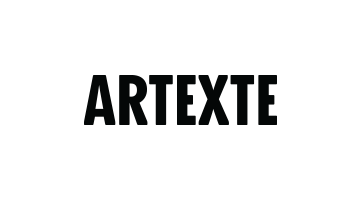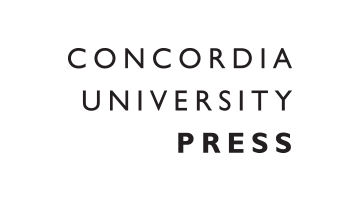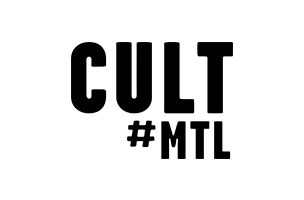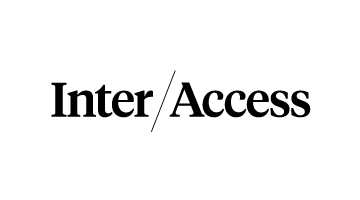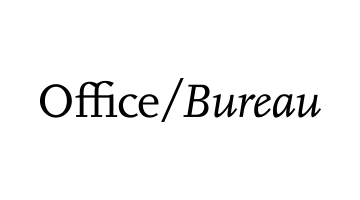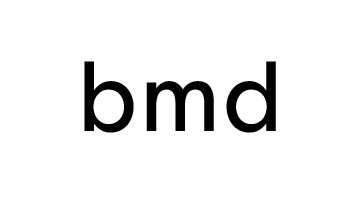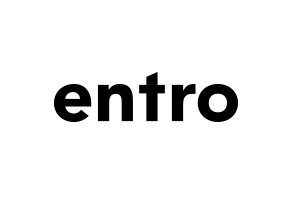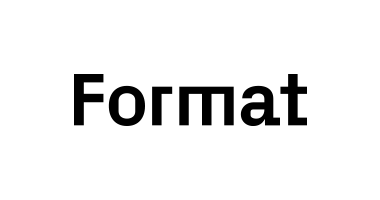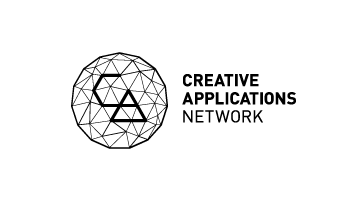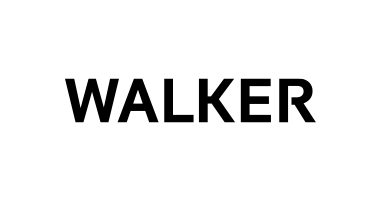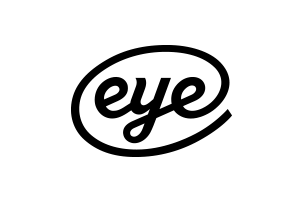LUM-
2019
¤ A-B-Z-LUM is a new workshop by artist Ken Lum. From May 24 to 25, 2019, we’ll be in Montréal to explore monetized forms of text and typography.
¤ Join us if you are a visual artist or designer, a student or professional.
¤ The $75 CAD fee will cover an evening talk on May 24 and an afternoon workshop on May 25. Apply before May 3.
¤ Ken Lum
¤ Vancouver – Philadelphia
¤ #kenlum
Ken Lum is known for his art in painting, sculpture, and photography, as well as his interest in language and letterforms. His work addresses immigration, subject formation, and public space. He has an impressive exhibition record including major works at Documenta 11, Venice Biennale, São Paulo Biennale, Gwangju Biennale, and Whitney Biennale. He is Chair of Fine Arts at the University of Pennsylvania’s School of Design in Philadelphia.
TXT-
2018
± A is for August, 2018, and A-B-Z dash TXT. From the 23rd to the 26th, we’ll be at InterAccess in Toronto. Come toy with typography, Telidon, and tools for publishing.
± If you’re a professional designer, artist, coder, or writer, A is also for ‘apply now’. Deadline: July 15th. Fee: 675 CAD $.
± Join us for four days of talks, workshops, and damn good coffee.
± Jürg, Jon, and Mindy will present talks and three days filled with printing, projections and peer-to-peer protocols.
± J is for
± Jürg Lehni
± Zürich
± @juerglehni
Jürg Lehni works with the nuances of technology, tools, and the human condition. His works often emerges as platforms for production and research, such as drawing machines like Rita and Hektor, as well as software frameworks like Paperjs.org and Scriptographer.org. In 2015, Viktor was acquired by the SFMOMA. In addition to exhibiting, working and teaching internationally, Lehni runs a studio practice in Zürich.
± J is for
± Jon Gacnik
± Los Angeles
± @jongacnik
Jon Gacnik is a designer and programmer. He is a partner and technology director at Folder Studio, where they design books, build websites, and explore idiosyncratic archives. He also builds, maintains, and contributes to hyper-focused tools in the open source and peer-to-peer web communities.
± M is for
± Mindy Seu
± Cambridge
± @mind_seu
Mindy Seu is a designer and M.Des candidate at Harvard GSD. She is an Internet Archive fellow for the Decentralized Web Summit. In the fall, she will begin a fellowship at the Berkman Center for the Internet. Previously, she was a designer at 2x4 and educator at California College of the Arts.
± We will offer talks on grids, language, and the history of Telidon.
± C is for
± Chris Lee
± Toronto/Buffalo
± @chrislee_uu
Chris Lee is a designer and educator based Buffalo, NY, and Toronto, ON. He is a graduate of OCADU and the Sandberg Instituut, he has worked for The Walrus magazine, Scapegoat journal, Metahaven, and Bruce Mau Design. Chris’ research explores graphic design’s entanglement with power, standards, and legitimacy. He is an Assistant Professor at the University at Buffalo SUNY and a research fellow at Het Nieuwe Instituut.
± D is for
± Department of Unusual Certainties
± Toronto/Copenhagen
± @douc_to
Department of Unusual Certainties is a design studio driven by research, public engagement, and dialogue. DoUC is anti-disciplinary—focusing on designing collaborative processes rather than specific outcomes defined by individual disciplines. DoUC has worked with Art Gallery of Ontario, Dansk Arkitektur Centre, Textile Museum of Canada, Harbourfront Centre, and Venice Biennale.
± N is for
± Nasrin Himada
± Tio’tia:ke
± @nasrin_himada
Nasrin Himada is a Palestinian writer, editor, and curator based in Tio’tia:ke (Montréal), in Kanien’kehá:ka territory. Their writing on contemporary art has appeared in Canadian Art, C Magazine, Critical Signals, The Funambulist, Fuse Magazine, and MICE Magazine, among others. They are the co-editor of contemptorary.org.
± N is for
± Nell Tenhaaf
± Toronto
Nell is an electronic media artist and writer. She once experimented with narrative structures for viewers to navigate Telidon, for example with Us And/Or Them (1983). Her works often involve the viewer, like in the touch-activated video installation UCBM (You could be me) (1999), Flo’nGlo (2005), and WinWin (2012). Tenhaaf’s writing addresses the cultural implications of biotechnologies and of Artificial Life. She is a Professor at York University and is represented by Paul Petro Contemporary Art.
± S is for
± St Marie φ Walker
± Toronto
± @stmarie_walker
St Marie φ Walker are artist-researchers who focus on the psychological dimensions of familiar objects, shared environments, and social relations. Denise St Marie attained a BFA from the University of Victoria and Timothy Walker received a BA in Philosophy from the University of Toronto. In 2017 St Marie φ Walker both achieved an MFA from the University of Waterloo, and in 2018 they were jointly awarded Gold for the Governor General’s Academic Medal.
± Thank you to our partners.
Co-presenter
Sponsors
Media Partners
LTR-
2017
<p> Led by designer and guest professor Michèle Champagne, with author Daniel Canty, and co-presented by Artexte, A-B-Z-LTR plays with letters as tools for inviting dialogue about design and technology. </p>
<p> A-B-Z-LTR students correspond within The Collection, a fictional literary terrain in The Stack dominated by Alphabook, a merger between Alphabet and Facebook. </p>
<p> On December 11th, The Collection launches a public salon given in French. Students will read their opinion letters out loud and lettered luminaries will join the intellectual ping pong. </p>
<p> Public salon in French. December 11th, 2017, 6–9pm. Free entry. Free coffee. École de design, Espace diffusion, 3rd floor. </p>
<p> Thank you to our amazing lettered luminaries. </p>
Anouk Pennel
Graphic designer and co-founder of Studio Feed and Feedtype in Montréal. Anouk recently drew big letters for big sheets of paper.
Daniel Canty
Jean-François Vallée
Jessica Hébert
Jessica is a librarian at Artexte who engages in acts of creation as well as contemplation around art documentation, and what is saved and what is lost in the collection.
Michèle Champagne
A-B-Z co-founder. Operates as Michhham. Michèle is a designer and guest professor at École de design at UQAM. She once plotted Rob Ford on an e-cover for Penguin Random House Canada.
Réjean François Côté
Réjean is a mail artist, collagist and proud member of The Eternal Network. Author of the assembly zine Circulaire 132.
<p> Thank you to our amazing partners. </p>
<p> To launch LTR, the following invitation letter was sent to students. </p>
<h1>Salonnière Michhham etDan Can 3000
A–B–Z–LTR
Recueil de Lettres</h1>
<br>
<br>
<p>11 septembre 2017
<br>
Groupe de candidatas
Université du Québec à Montréal
École de design
DES5214 Typographisme : associations
<br>
<br>
<br>
<br>
<br>
Cher candidatas,
<br>
Il y a trop de fausses conceptions de la réalité. Il y a trop de fausses conceptions d’où nous venons, d’où nous en sommes et d’où nous allons. Des décennies après l’invention de l’Internet et du Web, les nations et leurs populations ont continué de considérer ce domaine comme une réalité virtuelle future, une nouvelle interface détachée de la Terre Gutenberg et de ses socio-technologies imprimées.
<br>
Néanmoins, certains développements récents nous permettent d’espérer. Finalement, les populations ont découvert que la computation a une longue histoire, que l’Internet et le Web sont des extensions de la Terre Gutenberg et que les interventions littéraro-numériques peuvent y avoir de sérieuses implications géopolitiques. Le Web n’est pas un second Royaume séparé de l’infrastructure en surface. Le Web est un paysage — virtuel et matériel, vrai et faux — un élément clé du Mille-Feuille que nous habitons. La nation vit dans Le Mille-Feuille et Le Mille-Feuille vit dans la nation.
<br>
Dans Le Mille-Feuille, l’imprimé et le numérique s’hybrident de manière incontrôlable et la région du Recueil de Lettres émerge des cendres. À l’heure actuelle, leurs relations sont participatives, complexes, hors contrôle.
<br>
Vous êtes invités à rejoindre le chaos. Vous êtes invités à rejoindre le Recueil de Lettres.
<br>
La région du Recueil s’oppose à la propriété intellectuelle privée: tout y est réciproque, tout y circule et s’y échange. L’Internet, à l’origine imaginé comme un espace académique et militaire, est devenu, dans sa représentation idéale, un espace libre et populaire. Aujourd’hui, par contre, l’Internet est aussi devenu un outil de contrôle et de monétisation. Ancré dans l’Internet, on trouve la World Wide Web où le Soi-MêmeMD est une marque déposée et exploitée pour des données par Alphabook – une fusion entre Alphabet et Facebook – le réseau supra-souverain du Mille-Feuille durant l’ère de la Grand Monopole. Le Recueil, lui, tente de se libérer de l’emprise d’Alphabook.
<br>
Vous êtes invités à accéder au Recueil de Lettres en tant que citoyen. Votre citoyenneté implique un engagement à se conformer au protocole du Recueil.
<br>
Pour des résultats participatifs optimaux, vous devez exécuter les exercices requis et travailler avec le Protocole. Y inclus: une identité visuelle stricte, en noir et blanc seulement, et avec Times New Roman (régulier et italique), la police par défaut de la navigation du Mille-Feuille. Pour exprimer votre identité, vous travaillerez avec l’Archive : une banque d’éléments graphiques et de formats de communication standardisés et open source. À travers une série d’exercices graphiques et littéraires, vous allez contribuer à l’Archive. À travers des contraintes, vous allez redécouvrir votre place dans le Mille-Feuille.
<br>
Vous deviendrez la contrainte. Vous deviendrez le chaos. Vous deviendrez la divergence. Vous deviendrez la créativité.
<br>
<br>
<br>
Bien à vous,
Salonnière Michhham et Dan Can 3000</p>
TXT-
2017
● If you are a professional designer, artist, or coder, join us for typographic feats across media and without all the clichés.
● The $675 CAD fee covers the 4-day intensive school and lots of coffee. A-B-Z-TXT will accept applications until July 21st.
● Learn from noted creatives and with a lively mix of fuzzy practices and disciplines.
● Talk and Masterclass
● Zach Lieberman
● will mix
● playful computation
● and typography
● @zach.lieberman
Zach is an artist and educator in New York City. Known for projects including iQ font, EyeWriter, and Land Lines, his work turns type and gesture upside-down and creates new modes of expression. He is deeply committed to knowledge-sharing and education, as evidenced by his co-founding of the C++ creative coding toolkit openFrameworks and the School for Poetic Computation.
● Talks and Workshops
● Ali S. Qadeer
● will exhume the
● materiality of text
● work.iamasq.ca
● @iamasq
Ali is a designer and educator in Toronto. With an MFA from RISD, his work focuses on algorithmic form and where graphic design meets the humanities. He has wrangled anamorphic text for The NYT Magazine and created a film advocating for budget increases for Toronto’s public library system. Ali is an Assistant Professor at OCAD University.
● Mindy Seu
● will introduce the poetry
● in interface aesthetics
● mindyseu.com
● @mind_seu
Mindy is a designer working between Cambridge and New York City. She recently left 2x4’s Interactive Media team. Previously she held workshops at the Internet Archive, Berkeley Art Museum, and launched online archives for Avant Garde & Eros Magazine. A graduate of UCLA’s Design Media Arts program, this fall she will begin studies at Harvard GSD.
● Talks
● Chris Lee
● will relate typography
● to state power
● cairolexicon.com
● @chrislee_uu
Chris is a designer in Toronto and Buffalo. A graduate of OCAD University and the Sandberg Instituut, he has worked for The Walrus magazine, Metahaven, and Bruce Mau Design. Chris explores the relationship between currency and graphic designers a reflection on design’s entanglement with power. His work speculates on alternative and decolonial forms for exchange. Chris is an Assistant Professor at the University at Buffalo. Chris is a special guest co-presented by Art Metropole.
● Lois Andison
● will comment on
● language as artistic
● medium
● loisandison.com
A prolific artist based in Toronto, Lois’ works are manifested in print, photo and video, and sculpture and installation. Type and letter forms appear frequently in her practice, and their (re)recombination through illumination and clever custom mechanics opens up new ways of thinking about language and meaning. Lois is represented by Olga Korper Gallery (Toronto) and Art Mûr, (Montreal), and an Associate Professor in the Fine Arts Department of the University of Waterloo. Lois is a special guest co-presented by InterAccess.
● Michèle Champagne
● will look for
● signs of Rob Ford
● michelechampagne.com
● @michhham
As a designer, Michèle has leapt from Toronto to Amsterdam and Montréal. For cultural research and publication design, she has worked with Droog, Metahaven, Mediamatic, Penguin Random House, Strelka Institute, and VPRO. She works with open content dynamics—from sourcing internet comments for print magazines to designing social networks with open source code. Michèle is a resident at l’École de design at UQÀM.
● Xavier Snelgrove
● will help you find the
● perfect emoji
● wxs.ca
● @wxswxs
Xavier is a Toronto-based algorithm designer, entrepreneur, educator and artist. As cofounder and CTO at Whirlscape, he designed the neural networks which predict emoji, stickers, and GIFs in the Dango app as well as the autocorrect powering the Minuum keyboard. He organizes the annual GenArtHackParty, that brings both beginners and experienced artists together to learn from each other and build generative artworks—quickly.
TXT-
2016
¶ A-B-Z-TXT is a school for 21st century typography. From August 18–21, 2016, we’ll convene at InterAccess in Toronto to learn about letters, language, print, and code as they shape our post-digital media terrain.
¶ You are invited to join us if you are a professional or recently graduated designer, artist, coder, writer, or editor. You seek to grasp typography across media and its expressive potential beyond trends.
¶ The $875 CAD fee will cover the 4-day programme and all the coffee that you can drink. A-B-Z-TXT will accept applicants until July 22nd.
¶ Learn from famed professionals and with an exciting mix of multidisciplinary practitioners.
¶ 1-Day Masterclasses
¶ August 20–21
¶ LUSTlab, The Hague
Unmapping Creativity
While typography extends the human faculty to express and communicate, one could state that it has reached its maximum capability to add value to the message it carries. Can typography be physical, or a sound, or an experience? With its reliance on vision, is it still one of our best tools available or are there alternatives? To find out we’ll ask: If typography is the answer then what is the question? Participants will be challenged to go beyond tools, to become hyper-lingual, and to ignore accepted wisdom while using their deepest intuitions to discover the true nature of language and its translation into media. Using hands-on analogue prototyping, and bottom-up thinking we’ll develop new ways of working, and collectively share and consider these discoveries.
About LUSTlab
LUSTlab researches, generates hypotheses and makes unstable media stable again. The R&D wing of Jeroen Barendse, Thomas Castro, and Dimitri Nieuwenhuizen’s multidisciplinary design studio LUST, LUSTlab brings the internet down to earth and searches for the missing link(s) between the digital and the physical. They have created a shifting textscape at Amsterdam’s Stedelijk Museum, transformed weather data into poetry at Forum in The Hague, and made a viewing station in which users could ‘hyperlocate’ new and abstract views of urban space.
¶ N O R M A L S, Paris
.PTF – A Speculative Type Format
Open your favorite creative suite, and you’ll be greeted with a digital sheet of paper, a digital pencil case with crayons, stamps, and scissors, etc. Despite being composed of pixels, type often suffers from the very same archaism as most digital tools; we address typography as if it hadn’t changed since Gutenberg’s press. Until now! The ‘.PTF’, or parametric type format, is an invitation to imagine digitally native typography. Rather than draw yet another font, participants will be guided through building a standard typographic skeleton with a custom Processing application, and then—beyond bolding and italicizing—each will be tasked with creating a dynamic variant that relates to context, time, space, data inputs, and even interaction.
About N O R M A L S
N O R M A L S is a collection of works lying at the intersection of design and fiction. A mix of the visual, literary, prototypical, and functional, the duo’s works create a rich narrative universe—an anticipated future. Desirable to some, distressing to others, their vision is fuelled by our present-day dreams of ubiquitous 3D printing and algorithmic superstition. Their works include an augmented reality garment exhibited at Pratt Gallery during New York Fashion Week, a parametric typeface called N O R M A L T Y P E, and an eponymous graphic novel series.
¶ Talks and Workshops
¶ August 18-19
¶ Sean Yendrys, NYC/Montreal
Sean Yendrys is an independent designer who works in the cultural field, often collaborating with artists, architects, curators and institutions on a wide range of work. He designed the covers for a two-book set exploring infrastructure for the Princeton Architectural Press, and the signage for the Álvaro Siza exhibition for the CCA. The recipient of a MFA from Yale University School of Art in 2014, he also teaches typography at Parsons The New School.
¶ Steph Davidson, NYC
Born in Toronto, and a graduate of Western University, Steph Davidson has gone on to become the unofficial ‘net artist in residence’ of the Bloomberg Businessweek digital team. Steph creates GIFs, illustrations, photo collages, video, and playful web experiences that make the magazine’s editorial at home on screen as it is in print. Steph was involved in the web design of Paul Ford’s essay “What is Code?” and Businessweek’s recent Global Tech Issue. Steph is also big on Tumblr.
¶ Tracy Ma, NYC
Hong Kong-born Canadian designer Tracy Ma was until recently a driving force behind the irreverent design at Bloomberg Businessweek. First working with the magazine in 2011, she was promoted to deputy creative director when Richard Turley departed for MTV in 2014. Overseeing the weekly print magazine, she also lead the art direction for its annual Design Conference. Just a few weeks, ago Tracy announced she was leaving to become the Creative Director of Matter Studios, a company emerging from Medium.
¶ Talks
¶ August 18-19
¶ Alana Johns, Toronto
Alana Johns is a Professor in the Department of Linguistics at the University of Toronto and works to study and preserve the Inuktitut language (one of the principal Inuit languages of Canada). She researches the grammatical properties of Inuktitut, its dialect variation, and is the co-author of a dictionary of word-forming suffixes of the Utkuhiksalingmiut people of the central Canadian Arctic. Alana is also involved in Aboriginal language maintenance and works closely with community language specialists in Nunatsiavut.
¶ Ali S. Qadeer, Toronto
Ali Shamas Qadeer is a designer and educator who works in print, pages and pixels. With an MFA from RISD in 2014, his work focuses on algorithmic form and where graphic design meets the humanities. He has wrangled anamorphic text for The NYT Magazine and created a film advocating for budget increases for Toronto’s public library system. An Assistant Professor in the design department at OCAD University, Ali is skeptical of the acronyms UX and UI.
¶ Ivona Kučerová, Hamilton
Ivona Kučerová is an Associate Professor in the Department of Linguistics and Languages and the Director of the Syntax Lab at McMaster University. Her work focuses on how we systematically understand combinations of words we never heard before, how we track new versus familiar information in a conversation, and whether understanding language in real time is computationally restricted. A native Czech speaker, her research spans Slavic, Germanic, Semitic, Inuit, and the Romance languages.
¶ Jessica Leong, Toronto
Jessica is a Toronto-based designer and is currently a senior designer at Frontier. With experience in everything from designing magazines to displays and super graphics, she has previously spent time with E.R.A. Architects, Bruce Mau Design, Indigo and Design Exchange. As the daughter of a calligrapher, her posture is poor and her handwriting resembles chicken scratch.
¶ Lauren Wickware, Hamilton
Lauren Wickware likes books. A lot. As a designer, she creates art books whose typography is inextricably linked to the texts and images she juggles between pages, folds and foil stamps. A graduate of Parsons The New School, she works with cultural movers and shakers like the Art Gallery of Hamilton and the Aga Khan Museum. For Art Gallery of Ontario, she recently designed the catalogue for Outsiders, a provocative exhibition of American photography from the 20th century.
¶ Patrick Pittman, Toronto
Patrick is a magazine obsessive caught between print and digital who has spent his career prodding, pushing and telling stories across platforms. He is the co-editor of The Alpine Review, and editorial and creative director of Totem in Toronto. He has worked as a correspondent for Monocle and was the editor of the boundary-defying Australian independent Dumbo Feather magazine.
¶ To inaugurate TXT, the following manifesto was written:
¶ All the great typography has already been designed. Type is not special any more. Today, we download free fonts, write our own code, publish on Medium, and print on demand. We copy from Pinterest and embrace easy Modernist look-a-likes. We revive calligraphy with an obsessive nostalgia for the cutesy 1950s. We even market handwriting as a stand-in for the human touch.
¶ In the past, typography was a craft and could challenge the ethos of the era. But not any more. The best type years are behind us.
¶ Or so they say.
¶ In the 21st century, it takes courage to release new typographic species. We must resist trends. We must embrace the history of typography, language and literature. We must experiment with new thinking, tools, and techniques.
¶ A-B-Z will celebrate this new century with leading practitioners, hands-on masterclasses, geeky lectures, group discussions, and far too much caffeine.
¶ From books to magazines, websites and displays, typography dances across media. A-B-Z brings you a hybrid and critical program for play and debate.
A-B-Z
A-B-Z is an international, decentralized school for art, design and computation. Founded by Michèle Champagne, and in association with Garry Ing and Greg J. Smith, A-B-Z blends our experience in design and computation, writing and editing, as well as lecturing, teaching, creating educational activities and publishing platforms.
TXT is our Toronto typography vacation. LTR is an open letter from Montréal. TLK is a series of spontaneous evening talks. LUM is a workshop with Ken Lum. And, TWN is Mindy Seu and Jon Gacnik’s collaborative ASCII town.
A-B-Z is open to new collaboration. Contact us with any queries or curiosities.
E +
mail@a-b-z.co
T +
@abz_co
